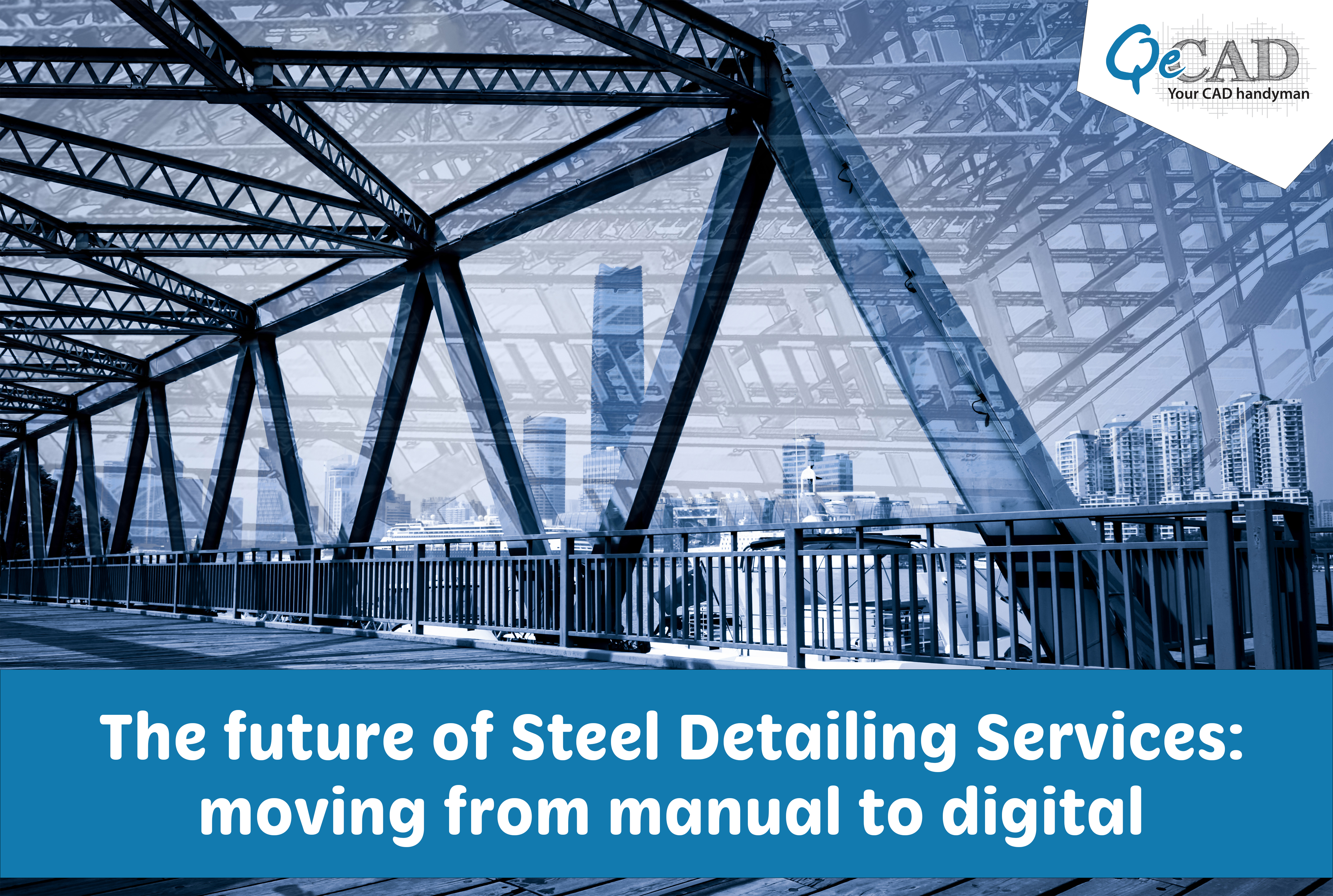
Introduction
Steel detailing services represent just one example of how the construction sector has consistently been towards the leading edge of technological breakthroughs. The steel detailing business has seen a revolution thanks to the introduction of computer-aided design (CAD) software, which has improved its efficiency, accuracy, and cost-effectiveness. The foreseeable future of steel detailing services, technological developments, and market developments are all going to be covered in the following article.
Steel detailing services
For the manufacturing and installation of steel structures including structures like bridges, homes, as well as manufacturing facilities, precise drawings, and designs are produced. The provision of exact and reliable data necessary for the fabrication as well as deployment of steel structures constitutes a few of the key functions of steel detailing services within the construction industry. Services for structural steel detailing, steel fabrication detailing, including steel erection detailing are among those offered by the steel detailing industry.
Advancement in technology in steel detailing services
Steel detailing has gone through an upsurge thanks to the usage of CAD software. For manufacture and erection, CAD software offers highly detailed and precise three-dimensional representations of steel structures. Steel Detailing Services have become more successful, precise, and economical thanks to CAD software. In addition to this, construction firms can save both resources and time by using CAD software to execute steel detailing tasks more quickly than using conventional techniques.
The usage of Building Information Modeling represents additional technological development within the steel detailing services. Building Information Modeling (BIM) Services offers a method for constructing 3D models of structures that may be utilized during development, building, and administration. Collaboration among designers, engineers, and subcontractors has been rendered possible by BIM, which also provides exact and correct data to facilitate steel detailing services.
Industry trends in steel detailing services
Multiple developments have had an impact on how steel detailing services will develop throughout the years to come as the steel detailing sector continues to be changing.
1) Increasing BIM Adoption
Developing 3D models of buildings and other constructions for usage during construction, design, and administration is known as BIM, as was previously indicated. Collaboration between designers, engineers, and subcontractors is made possible by BIM, which also provides exact and correct data regarding steel detailing services. In addition to this, the usage of BIM is anticipated to grow in the steel detailing sector due to its numerous advantages, including higher precision, decreased inaccuracies, and a greater level of cooperation.
2) Automation
A further innovation influencing the foreseeable future of steel detailing services includes automation. To save the effort and time required, tedious procedures like labeling and numbering steel components are able to be automated. In order to save both resources and time for construction organizations, automation may enable steel detailing services to be accomplished with greater efficiency and precision.
3) Cloud-based Steel Detailing Services
Steel detailing businesses are able to operate from anywhere and instantly interact with subcontractors as well as construction firms thanks to cloud-based technologies for steel detailing. The advantages of cloud-based steel detailing services include enhanced teamwork, greater versatility, and fewer costs related to overhead.
4) Green construction
Environmentally friendly building techniques are gaining popularity in the building sector. Businesses continuously look for ways to lessen the carbon footprint of steel structures, and steel detailing services are certainly not an exemption. Utilizing sustainable resources, cutting contaminants, and improving the effectiveness of energy are some examples of green building practices.
5) Customization
With consumers wanting distinctive and cutting-edge designs, customization has grown more significant in the steel detailing sector. Modern technology is being used by the steel detailing businesses to design steel structures that are specifically tailored to satisfy the requirements of their customers.
6) Outsourcing
With businesses seeking to cut costs and boost productivity, outsourcing is growing in popularity in the steel detailing sector. By offloading non-essential duties to specialized businesses, outsourcing enables steel detailing businesses to concentrate on their key strengths.
Conclusion
Steel detailing services are expected to continue to grow in importance within the building sector. Steel detailing services have a promising future, as industry developments, as well as technological improvements, are spurring inventiveness and expansion. Steel detailing services are now more successful, legitimate, as well as productive because of recent advances in technology like CAD software as well as BIM. The projected growth of steel detailing services is being shaped by marketplace developments like greater BIM usage, automated processes, green building, customization, outsourcing as well as cloud-based steel detailing services. Steel detailing services are going to stay essential to the fabricating and erecting of steel structures when the building industry develops.
